Advertisements
Advertisements
Question
Using Gauss’ law deduce the expression for the electric field due to a uniformly charged spherical conducting shell of radius R at a point
(i) outside and (ii) inside the shell.
Plot a graph showing variation of electric field as a function of r > R and r < R.
(r being the distance from the centre of the shell)
Solution
Electric Field Due To A Uniformly Charged Thin Spherical Shell:
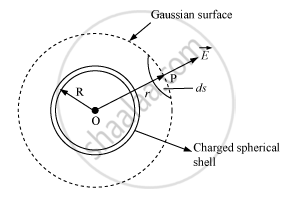
(i) When point P lies outside the spherical shell:
Suppose that we have to calculate electric field at the point P at a distance r (r > R) from its centre. Draw the Gaussian surface through point P so as to enclose the charged spherical shell. The Gaussian surface is a spherical shell of radius r and centre O.
Let `vecE`be the electric field at point P. Then, the electric flux through area element vecdsis given by,
`dphi = vecE.vecds`
Since `vecds` s also along normal to the surface,
dΦ = E ds
∴ Total electric flux through the Gaussian surface is given by,
`phi = oint_s Eds = Eoint_s ds`
Now,
`oint ds = 4pir^2`
`therefore phi= E xx 4pir^2 ..... (1)`
Since the charge enclosed by the Gaussian surface is q, according to Gauss theorem,
`phi = q/epsi_0 ......(2)`
From equations (i) and (ii), we obtain
`E xx 4pir^2q/epsi_o`
`E = 1/(4piepsi_0).q/r^2` (for r>R)
(ii) When point P lies inside the spherical shell:
In such a case, the Gaussian surface encloses no charge.
According to Gauss law,
E × 4πr2 = 0
i.e., = E = 0 (r < R)
Graph showing the variation of electric field as a function of r:
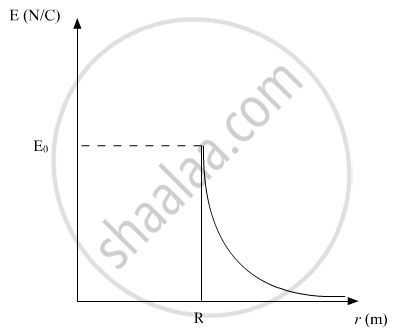
APPEARS IN
RELATED QUESTIONS
Use Gauss's law to find the electric field due to a uniformly charged infinite plane sheet. What is the direction of field for positive and negative charge densities?
Two large, thin metal plates are parallel and close to each other. On their inner faces, the plates have surface charge densities of opposite signs and of magnitude 17.0 × 10−22 C/m2. What is E:
- in the outer region of the first plate,
- in the outer region of the second plate, and
- between the plates?
Using Gauss’s law, prove that the electric field at a point due to a uniformly charged infinite plane sheet is independent of the distance from it.
How is the field directed if (i) the sheet is positively charged, (ii) negatively charged?
A charge Q is uniformly distributed on a spherical shell. What is the field at the centre of the shell? If a point charge is brought close to the shell, will the field at the centre change? Does your answer depend on whether the shell is conducting or non-conducting?
A thin, metallic spherical shell contains a charge Q on it. A point charge q is placed at the centre of the shell and another charge q1 is placed outside it as shown in the following figure . All the three charges are positive. The force on the charge at the centre is ____________.
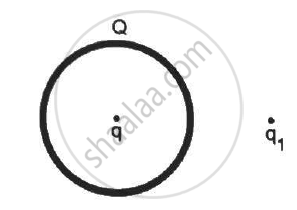
A large non-conducting sheet M is given a uniform charge density. Two uncharged small metal rods A and B are placed near the sheet as shown in the following figure.
(a) M attracts A.
(b) M attracts B.
(c) A attracts B.
(d) B attracts A.
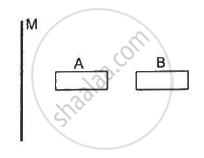
Find the flux of the electric field through a spherical surface of radius R due to a charge of 10−7 C at the centre and another equal charge at a point 2R away from the centre in the following figure.
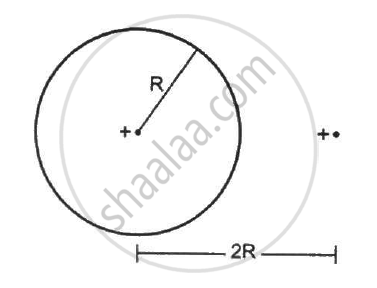
A circular wire-loop of radius a carries a total charge Q distributed uniformly over its length. A small length dL of the wire is cut off. Find the electric field at the centre due to the remaining wire.
